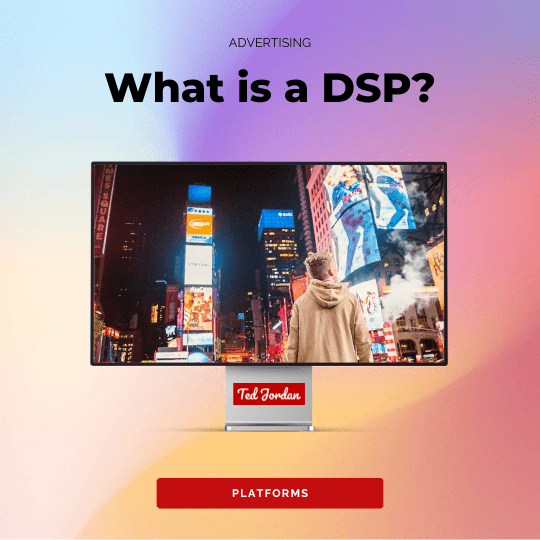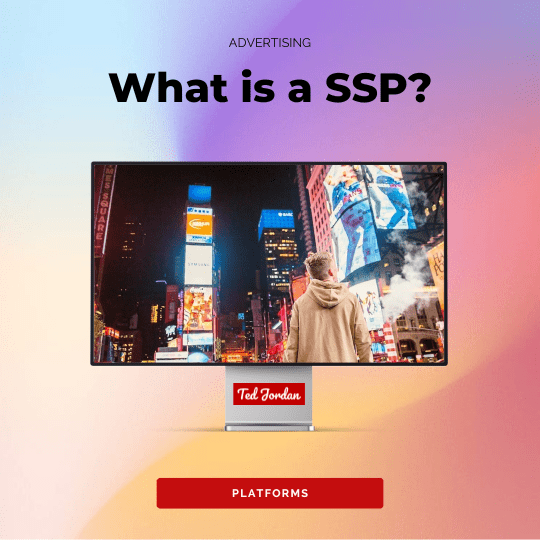In the vast world of digital marketing, programmatic advertising has become a great ally for small businesses and marketing agencies.
With programmatic, selling and buying are done in an automated way: bidding and transactions become more efficient and effortless (versus other types of advertising). Advertisers and data analysts have then more time to focus on optimisation such as targeting A/B testing or experiment with various ad formats. Most of the actions are executed on a Demand-Side Platform (DSP).
However, advertisers must become programmatic experts or work with marketing agencies to use programmatic ads in an efficient way. This type of advertising might simplify a lot of actions (such as buying or selling ads) but must be used with caution.

With an array of ad formats, programmatic helps advertisers serve ads to their desired audience without the need for some time-consuming steps such as negotiating contracts (insertion orders) for each placement they wish to buy.
How does Programmatic Advertising work?
Programmatic advertising is a type of advertising where buying and selling ads are done in an automated way. Programmatic uses software (such as DSPs) so advertisers can focus on optimisation and ads improvement instead of requesting proposals, quotes and negotiating price manually.
Advanced software and algorithms buy impressions via ad exchanges (virtual marketplaces) so buyers can access thousands of publishers sites at once, from a programmatic ad platform.
Programmatic Advertising Platforms
Programmatic ad platforms utilise data-driven algorithms in order to maximise ROI and ad delivery.
Nowadays, there are an increasing number of programmatic advertising platforms available: DV 360, AppNexus, AdRoll, Adobe Advertising Cloud, etc.
And there are different types of programmatic ad platforms too.
Here are four common types of programmatic platforms explained simply:
- DSPs (Demand-Side Platforms)
Automate the availability and purchase of ad space from exchanges. - SSPs (Supply-Side Platforms)
Make ad space available to exchanges (=to advertisers). - Ad Exchanges
Digital marketplaces connecting publishers and advertisers. - CTV (Connected TV) Platforms
Platforms specialised in programmatic buying of ads on connected TVs.
Wondering what are the best DSPs in Programmatic right now? Check this list.
Programmatic Bidding Explained
It exists various programmatic ad bidding solutions: private deals, marketplaces, real-time auctions, direct ad buying, etc.
Here are the most common types of bidding in programmatic:
- RTB (Real-Time Bidding)
A user visits a website with an ad space on it (often more than one placement). The system analyses which ads would be a good fit, thanks to the data collected previously and in real time.
The software calculates and places bids for this ad space; the advertiser with the highest bid wins. Their ads are now appearing to the visiting user. - Private Marketplaces
Publishers decide which advertisers can advertise on their website; only the advertisers from that list will bid on an ad space. Whoever has the highest bid wins the auction and their ad is displayed. - Preferred Deals
Publishers offer their ad inventory at a negotiated cost to a handful of advertisers. Once the auction is live (in open or private marketplaces), these advertisers can buy ad placements at their negotiated price while others don’t benefit from these rates. - Programmatic Guaranteed
The publisher and the advertiser negotiate a price and terms of use for a specific ad inventory. This inventory is specifically designated for this advertiser at the negotiated price.
Programmatic Ad Formats
Like platforms, there are numerous programmatic ad formats available in the digital marketplace: DOOH, CTV, Native, programmatic audio, etc.
Here are some of the most used ad formats in today’s programmatic world:
- Native ads
Advertising content linked to the content users read (visual or topic) that looks organic. We find native ads mainly on news websites. - Video ads
Engaging videos targeting specific users so they are captivated and want to learn more about the product. - Display ads
Banner ads are available in different sizes; they can be static or dynamic. - Audio ads
An easy way to get in the heads of targeted audiences. They are integrated in podcasts or in music platforms such as Spotify or SoundCloud. - DOOH (Digital Out-Of-Home) ads
Think about all the digital screens you encounter in the street, at the supermarket, at the airport…

Why is Programmatic Important
Programmatic advertising plays an important part in marketing strategy because it allows advertisers to deliver campaigns across various formats. Combined with media trading, programmatic ad buying can significantly impact the success of advertisers campaigns.
Thanks to sophisticated algorithms and collected data, software can handle the sale and the purchase of ads at a speed humans can’t match.
Benefits of Programmatic Advertising
There are multiple advantages of using programmatic in marketing strategies:
- Data analysis and reporting in real time
- Advanced targeting available (targeting a female user, in her mid-30s, who loves rock climbing and who lives in Texas is possible for example)
- Use of first- or third-party data which increases audience reach
- Streamlined management
- Maximum efficiency
- Improved ROI (return on investment)
Despite all these advantages, programmatic ad buying can disappoint if advertisers are not experienced or did not set clear goals from the beginning. Most importantly, a considerable attention is needed against ad fraud or bad placements.
That’s why becoming a programmatic specialist or hiring a programmatic consultancy agency is a must.

How to Learn Programmatic Advertising
Account managers, business and media analysts, and small businesses, all need to learn the intricacies of programmatic advertising if they want to increase ROI and reach their perfect audience.
It may seem difficult to catch up with this evolving technology. So, how to learn programmatic advertising?
Become a Programmatic Specialist
For people discovering programmatic ad buying now, a multitude of resources are available online: blogs, free tutorials, YouTube videos, online courses, etc.
The key is to find what support is a good fit for each individual.
- YouTube
There are some YouTube channels explaining digital marketing and programmatic with human words (and not technical terms anyone understands) such as this one. It’s perfect for beginners. - Blogs
Similar to this article, some advertising specialists share their knowledge online and write free articles or tutorials to explain specific terms such as DSP, SSP and much more. - Online courses
Online courses are the best when individuals want to become an expert in a specific field. It’s great for beginners and can be used as a refresher for advanced analysts. The icing on the cake is when these courses are self-paced, dynamic and easy to join.
For example, Ted Jordan offers a Programmatic Advertising Online Course where learners get a certificate at the end of the course. Also, upon completion, an expert analyst assists certified users with their strategies and briefs.
Let Programmatic Specialists do the Work
Learning programmatic advertising can be time consuming: another option is to work with marketing consultants so they optimise campaigns and share a part of their knowledge with advertisers.
While working with digital marketing consultants, advertisers learn the basics of programmatic advertising. They then feel more confident about joining an online course.
Advertisers and small agencies should learn how to advertise on programmatic formats if they want to increase their reach and become trusted brands. Or if they don’t have the time to do so, they should work with a programmatic specialist, such as Ted Jordan, to manage their campaigns.






